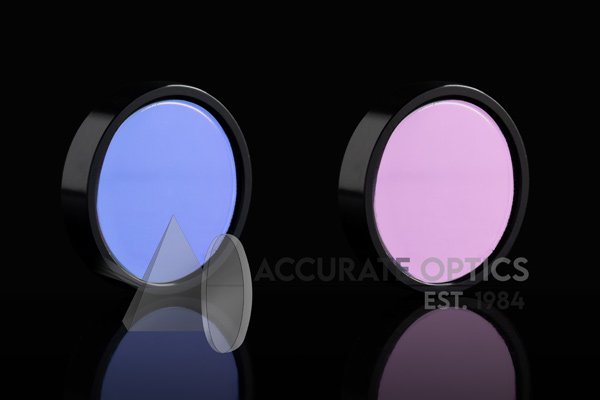High Reflective Coating for Scientific Instruments
When it comes to scientific instruments, precision and accuracy are paramount. Scientists and researchers rely on these instruments to explore the mysteries of the universe, delve into the microcosms of the atomic world, or understand complex biological processes. A key element in enhancing the performance of these instruments is high reflective coating, a technology that might not be in the spotlight but plays a crucial role in scientific breakthroughs.
The Science of Reflection
High reflective coatings, also known as HR coatings, are designed to optimize the reflection of light or other electromagnetic waves from a surface. They work on a simple yet fascinating principle – the more light a surface reflects, the less it absorbs. In scientific instruments, this is particularly vital, as minimizing energy loss is essential for accurate measurements and observations.
Applications Across Scientific Domains
High reflective coatings find applications in a wide array of scientific instruments, each contributing to specific advancements in their respective fields:
- Telescopes: In astronomy, HR coatings enhance the performance of telescope mirrors, allowing more light to be collected and focused on distant celestial objects. This results in clearer and more detailed images of stars, galaxies, and planets.
- Microscopes: In microscopy, HR coatings are used on microscope lenses to minimize light loss and improve the contrast and resolution of tiny structures. This is invaluable in fields like biology, where studying minuscule cellular structures is essential.
- Spectrometers: Spectrometers, used for measuring the properties of light and matter, rely on HR coatings to precisely direct and reflect light, ensuring accurate readings in chemistry, physics, and material science.
- Laser Optics: HR coatings enable laser instruments to achieve maximum power output by reducing energy loss due to reflection. This is vital in fields like medical laser surgery and materials processing.
- Optical Filters: In analytical instruments and sensors, HR coatings are used to create optical filters that selectively transmit or block certain wavelengths of light, enabling the identification of specific compounds or molecules.
Benefits Beyond Precision
Apart from increasing the accuracy of measurements, high reflective coatings offer additional benefits. They extend the lifespan of optical components, reduce the need for maintenance, and enhance overall instrument efficiency. Moreover, they often allow scientists to work with lower-intensity light sources, reducing potential harm to sensitive samples.
Customization Matters
The choice of high reflective coating is not one-size-fits-all. Different scientific instruments require coatings tailored to their specific wavelengths and angles of incidence. Customization is key to achieving optimal results.
Future Possibilities
As technology advances, high reflective coatings continue to evolve, enabling scientific instruments to push the boundaries of what is possible. From exploring the cosmos to unraveling the mysteries of the microscopic world, high reflective coatings play a silent but vital role in advancing human knowledge.
Conclusion:
In conclusion, high reflective coatings are a fascinating yet often overlooked aspect of scientific instrument design. Their role in optimizing the performance of instruments across various scientific domains cannot be overstated. With continued research and innovation, these coatings will undoubtedly continue to empower scientists and researchers in their quest for knowledge.
Important FAQs:
Q: What is a high reflective coating for scientific instruments?
A: A high reflective coating is a specialized thin film applied to optical components of scientific instruments to enhance light reflection and improve performance
Q: How does a high reflective coating benefit scientific instruments?
A: It maximizes the efficiency of light transmission, enabling more accurate measurements and observations in various scientific applications.
Q: What types of scientific instruments utilize high reflective coatings?
A: Instruments such as spectrometers, microscopes, telescopes, and interferometers often incorporate high reflective coatings to optimize their optical performance.
Q: Are high reflective coatings customizable for specific wavelengths?
A: Yes, high reflective coatings can be tailored to reflect specific wavelengths of light, ensuring optimal performance for particular scientific experiments or applications.
Q: Do high reflective coatings increase the sensitivity of scientific instruments?
A: Yes, by minimizing light loss and maximizing reflection, high reflective coatings can enhance the sensitivity and precision of scientific measurements and observations.
Q: Can high reflective coatings withstand the demanding conditions of scientific experiments?
A: Yes, high reflective coatings are engineered to be durable and resistant to environmental factors such as temperature variations and humidity, ensuring reliable performance.
Q: Are high reflective coatings compatible with different types of optical materials?
A: Yes, high reflective coatings can be applied to a wide range of optical materials, including glass, quartz, and various types of crystals, to suit the requirements of different scientific instruments.
Q: Are there any special considerations for maintaining scientific instruments with high reflective coatings?
A: While high reflective coatings are generally durable, it’s important to handle and clean the instruments with care to avoid scratching or damaging the coating, using recommended cleaning methods and materials.
Thank you for taking the time to explore our blog. We hope you found the information on high reflective coatings for scientific instruments valuable and insightful. If you have any further questions or topics you’d like us to cover, please feel free to reach out. Stay tuned for more informative content!







